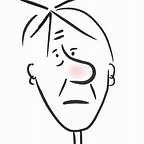Design talk — now and then
AKA old person reminiscing
Year 2023 has been hard in many ways and one of them has been in the tech layoffs targeting the UX profession. I have been doing this now for twenty years, and while in the beginning I did not really think about how the profession was talked about, now I do, and I wanted to list some of how I remember it.
I was recruited to Nokia Mobile Phones in 2002 as a summer intern. The group was called UI specifications and we practiced HCI. A lot of time went into user research and a lot of thought into details because things were new, there were no conventions, and there were a lot of technical and hardware constraints. UI specifications was a part of the “RnD”, aka Research and Development, and the name was appropriate as we ideated in cross-functional groups based on both user research and technical innovations.
Later our group moved into Nokia Design, which was a big change. While we continued to work closely with product and engineering, the approach became more informed by practices in industrial and visual communication design, and marketing storytelling. Design operated like an agency inside the company, with a visible studio culture to help identify and to differentiate from other parts of the company.
Because Nokia was at the forefront and had their own proprietary operating systems, the design activity was heavily documented in detailed guidelines, and the conversations leading to those guidelines were taken seriously. The development time of a phone product is long, and the feedback loop even longer, which meant that decisions could not be taken lightly because iterations were few and far between.
From Nokia I moved to HERE Technologies, which used to be a part of Nokia, meaning that the change was not big except that we followed Facebook etc. in talking about “embedded design”. The design details were ironed out as a collaboration between a UX and visual designer, but coded design systems were also starting to emerge. At this point, Design Thinking and Design Sprint became productised and designers claimed ownership of empathy. With these products, design became a facilitator and synthesizer of stakeholder ideas and conversations and we added the labels of service and strategic design and started reaching for the seat at the table in those words.
On one hand, the specialisation continued with roles such as API designer or business designer, but on the other hand we saw the rise of the product designer, this generalist unicorn who can do everything and more. Curiously, with the product designer role, the big companies seemed to emphasize visual design skills in their hiring while smaller companies stopped caring about craft.
From HERE I moved to my current scale-up via a short stint in a voice UI startup. We embrace the embedded model of unicorns and because the product is mature, the difficulties of maintaining a coherent experience in an embedded setup with limited engineering resources is painfully visible on the product UI. We also had our fair share of layoffs and like so many others, deprioritised user research.
My take on all of this is affected by where I worked and what my role has been, but I do think it is interesting that the fight for more power has lead to layoffs that have disproportionately hit design in general and user research more specifically. For a continued seat at the table, the bloggers are advising talking numbers and proving ROI, but it is not easy to prove the ROI of a mistake you didn’t make. And it is a bit wrong to say that an improved user experience caused 80% more money in the bank if you think (like you should) that the user experience is everyone’s cause.
The economic downturn gave the companies the excuse to celebrate “lean” and feel nostalgic for the earlier days of their startups when beer was cold and decisions bold. Trying to understand a need or a problem more deeply is too slow when you want to move fast and break things again. The dismissal of deeper thought and reflection is highlighted by the AI / GPT explosion: it almost feels like we think all the knowledge in the world exists already, and we can just query the oracle ad nauseam without needing to understand. This is the next step though: a lot of bulk websites and apps are easy to create with AI because they follow a simple formula.
So from RnD to marketing storytelling to facilitation empaths to embedded unicorns and seats at the table to being laid off and soon replaced by AI, the profession might need another reinvention. Or at least a rebranding (how about societal brain surgeon, behavioural sha(wo)man or strategic witch?) or maybe growing a bigger unicorn horn.
Some other people also said:
